
作者: Leila Tan|更新:2024年4月24日
Scars happen to everyone. It's OK to have acne scars because you can get rid of them through proper treatment and get healthy skin again.
1
What is acne?
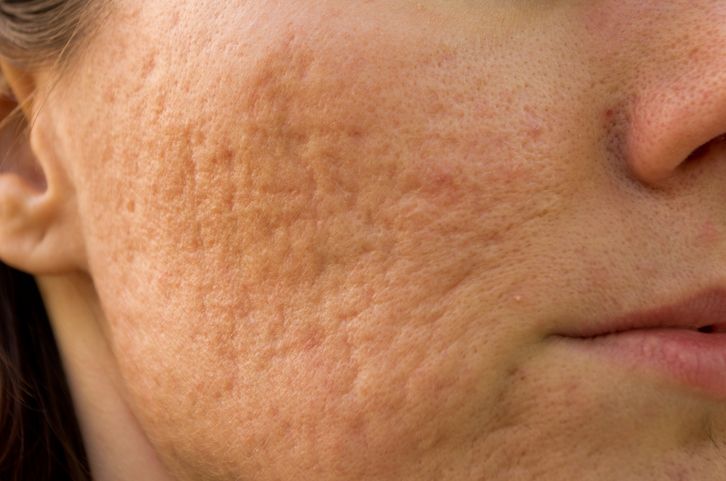
The skin condition known as acne is brought on by clogged hair follicles beneath the epidermis. Dead skin cells and sebum (which is known to be oil that helps prevent the skin from drying out) helps to clog pores which eventually causes lesions commonly known as pimples or zits to break out. Your skin sheds 40,000 cells per hour yet occasionally one of those dead cells gets stuck in a pore. There are occasions when small, clogged pores cause whiteheads or blackheads to occur. These pores can occasionally swell up and cause different types of acne.
2
How Acne Scars Forms?

Inflammation of acne lesions leads to acne scars. The pore wall breaks down causing the acne pore to expand. Some acne lesions are tiny, leaving superficial scars that heal fast. Blemishes occasionally leak their contents into the surrounding tissue leaving deeper scarring. In order to treat the acne scar, the skin produces new collagen fibers.
3
Types of Acne Scars
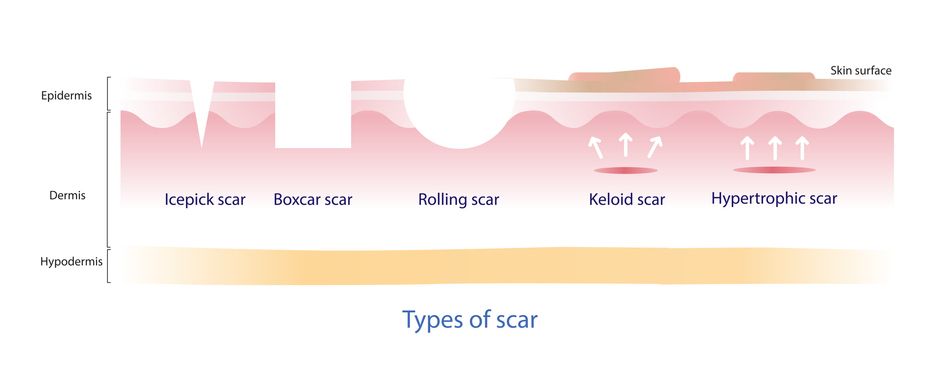
Atrophic or Depressed Scarring:
Ice pick scars
The shaft of an ice pick tool is wide and gets smaller towards the tip. In that it is a hole that is large at the top and narrows to a point as it penetrates deeper into the skin, which this kind of acne scar mimics the tool. Such an indentation is typical and one of the most severe acne scars that is hardest to heal. You can find this acne scars when your skin is thinner, as on your forehead and top cheekbones.
Rolling scars
You can find these sorts of scars normally on your lower cheeks and jaw. This part of your face is known to have thick skin. Because of the sloping margins of the indentations, your skin can become uneven.
Boxcar acne scars
A boxcar scar is described as an indent with sharper edges. When the edges penetrate the flesh deeply it results in deeper scars. These types of scars can be found in the lower chest and jaw of your face.
Keloid or hypertrophic scars
These scar tissue lesions protrude from the surrounding skin. These scars can be itchy, uncomfortable, or painful and are typically located on the chest, back, shoulders, and jawline. They are brought on by an overgrowth of collagen containing fibrous structures in the vicinity of the skin.
Hyperpigmentation
They are the black areas that tend to stay after your pimples have cleared up. Strictly speaking, post-inflammatory hyperpigmentation as the name implies is a skin darkening that happens after severe skin inflammation. This sort of acne scarring is most frequently caused by picking or squeezing acne, which is yet another extremely essential reason to refrain from touching your face. Even though dark spots typically fade with time, the process can take weeks or even months. Fortunately, there are a few topical treatments you can use to speed up this process.
4
Acne Scar Treatment
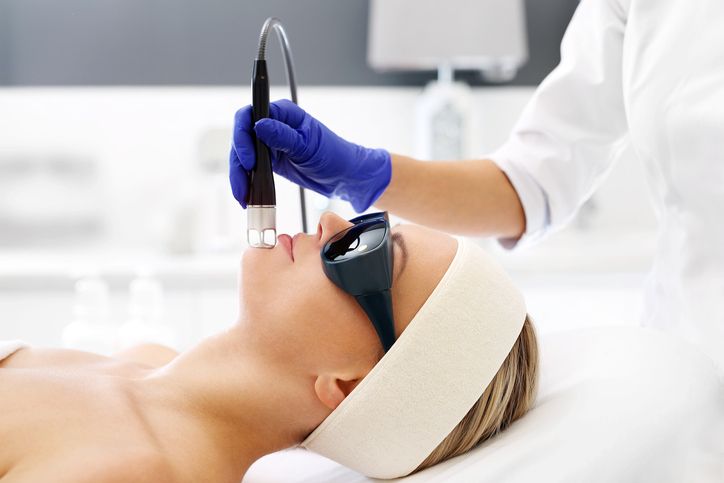
There are many treatments for acne scars and it may be a little overwhelming to choose the right one. To clear your confusion we have listed the most effective acne scar removal treatment from New Beauty as well as some other treatment options.
Acne Treatment - Perfect Aesthetics
The Acne Treatment is a new treatment from Perfect Aesthetics for skin that is prone to breakouts. First, the dual spiral suction plus drainage technology exfoliates dead skin cells and clears clogged pores at the same time, reducing acne infection and inflammation. The face is then treated with a moisturizer serum to control sebum output and encourage collagen synthesis. Future breakouts of acne are less likely if there is insufficient oil. Acne, blemishes, blackheads, whiteheads, pockmarks, enlarged pores, dry skin, acne scars, and dull skin tone are all goals of the acne treatment.
5
What can you get out of this treatment
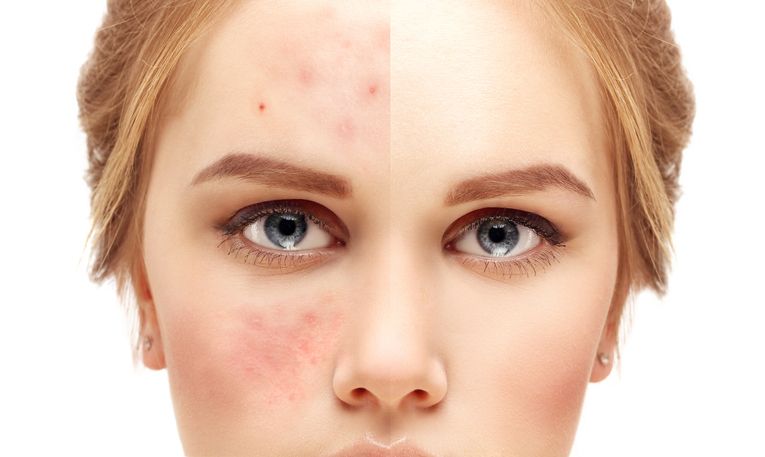
Removes Dead Skin Cells
Excess dead skin cells are removed using dual spiral suction and drainage technology to keep pores from becoming clogged in the future.
Hydrating Essence
A medical-grade moisturizer serum may penetrate the deepest layers of the skin to nourish and hydrate the skin tissues while also soothing acne-prone skin. Additionally, it calms the sebaceous glands to stop overproduction of oil.
Visible Results
You will have less acne breakouts, acne scarring, and various types of acne as the treatment goes on. See as your skin becomes healthier, more moisturized, and lighter with less of an oily sheen!
Non-invasive Treatment
The acne treatment is non-invasive, so there is no need for oral antibiotics, surgery, incisions, injections, or acne medication. Most persons with moderate to severe acne, according to our in-house beauticians, are considered candidates for this treatment.
6
Step by step procedure
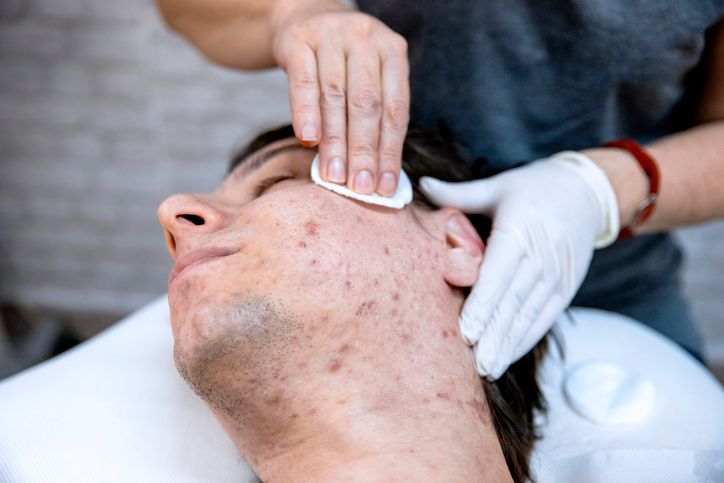
Step 1: The consultant will outline the procedure's steps and theoretical underpinnings. The beauty therapist then performs a patch test to make sure the probe hasn't caused any irritation.
Step 2: The hoover microdermabrasion and deep cleaning process is started by the twin spiral suction/drainage probe. Exfoliation is used to remove dead skin cells, oil, and grime that have been trapped in the pores and on the surface of the skin. The acne inflammation and infection should gradually subside if the impurities are removed.
Step 3: To balance the water-to-oil ratio, calm the oil glands from future overproduction of oil, and promote collagen growth, the moisturizing serum is injected into the unclogged skin. This results in treating acne, fewer new outbreaks, and a finer complexion for the skin.
7
Treatment Guidelines
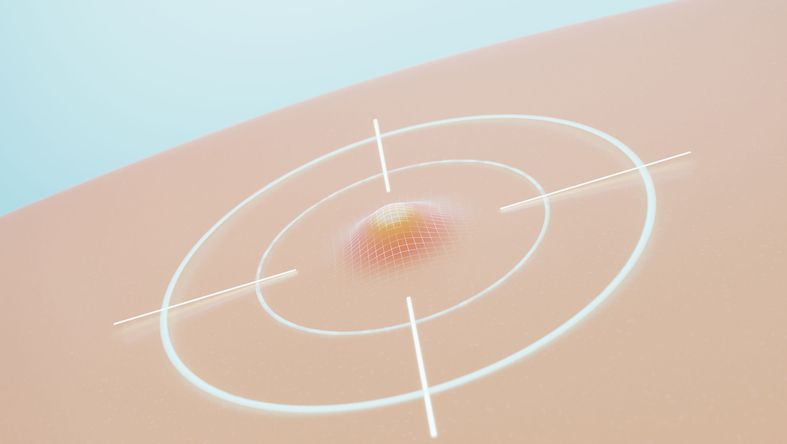
Before Treatment
- Use sunscreen with SPF 30+ before receiving therapy. - Avoid considerable sun exposure before treatment. - For two weeks prior to and following the procedure, refrain from using any laser, IPL, radio frequency, or other skin care treatments on the treated area.
After Treatment
- To continue shielding your sensitive skin from the sun, use a sunscreen with an SPF of 30 or higher. - Stop using skin care products containing AHA/BHA, exfoliants, and whitening agents for two weeks after treatment to prevent skin sensitivity. - Keep regular washing and skin care regimes. Choose skincare products with straightforward and gentle ingredients. Avoid touching your face forcefully.
Chemical peels
With this procedure, the top layer of old skin is removed using specialized chemicals. Normally once the top layer has been eliminated, the new skin that forms in is often softer and has less scars. As the skin's outermost layer is removed, it leaves with a smoother and more even appearance. After the surgery, you can suffer redness and peeling for three to seven days.
Dermabrasion
This procedure uses a high-speed brush or a special instrument that causes friction to remove the top skin layers and raised scars, much like a sandpaper scrapes the surface layer from a plank of wood. This is considered as an efficient scar removal procedure to resurface your skin and remove or lessen the depth of scars. The skin can take up to three weeks to heal from this procedure.
Microdermabrasion
Similar to dermabrasion, microdermabrasion removes the top layer of skin using specialized equipment. A hand held instrument is used by a dermatologist or aesthetician to remove superficial skin. There may be a need for more than one treatment, but there is no downtime. This treatment is considered to be effective for people with deep acne scars and this procedure is considered as a less time consuming type of dermabrasion.
Laser resurfacing
For this laser treatment, a laser hits under the skin's scarred collagen. This depends on the body's response to healing wounds to produce fresh, healthy collagen. In order to replace it, this promotes the growth of new skin. Ablative and non-ablative laser resurfacing are two distinct subtypes of this procedure. Depending on your skin type and the characteristics of your acne scars, your dermatologist will decide which type is best for you.
Fillers
Some kinds of acne scars can be "filled out" using a substance like collagen, hyaluronic acid or fat. Depending on the substance used, you may need to have filler injections more frequently than once every few months because fillers eventually permeate into your skin.
Microneedling
This method, which is also known as collagen induction therapy, involves repeatedly pricking the skin with a tiny needle to promote the growth of new collagen. This can lessen the visibility of scars. Stretch marks, wrinkles, and fine lines can all be reduced in appearance thanks to microneedling. As a side effect skin rashes could linger for a few days.
8
Home Remedies for Acne Scars
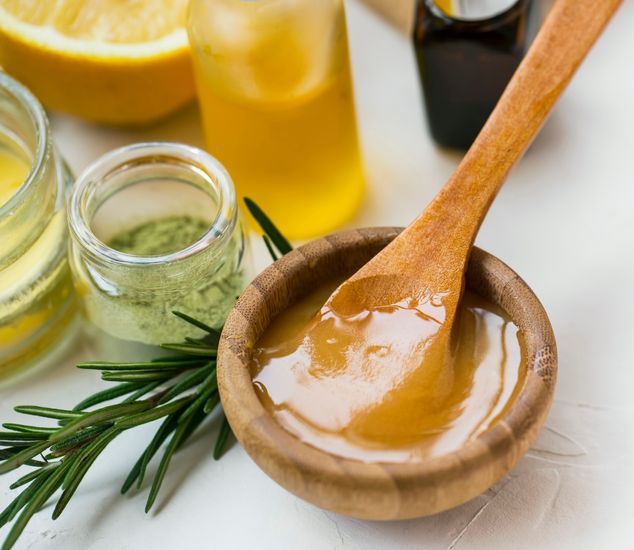
Apple Cider Vinegar
The appearance of the acne marks and scars may be lessened with diluted apple cider vinegar. Just make sure the fluid is thoroughly diluted as concentrated apple cider vinegar can further damage the face and result in severe burns.
Coconut Oil
According to studies, coconut oil moisturizes skin and helps to reduce acne scarring. Bear in mind that you should avoid this choice if you have highly oily skin because it could make things worse. To treat this problem you can use cold-pressed coconut oil.
Manuka Honey
Using manuka honey is an excellent choice as it is filled with anti-inflammatory and antibacterial qualities. Using honey immediately after applying apple cider vinegar to the skin heals the scar to help calm the region if it has dark marks or pigmented skin.
Acupuncture
As it enhances blood flow to the area, reduces swelling, and stimulates the creation of collagen, acupuncture can be a very effective treatment for scarring. This promotes greater tissue regeneration which helps to lessen the visibility of acne scarring. Before taking this treatment a dermatologist or other healthcare provider should be consulted.
9
How you can prevent future acne scars
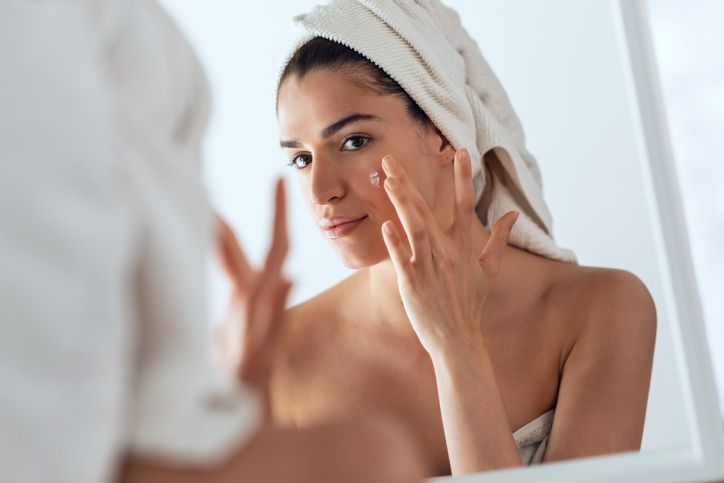
Use sunscreen: Sunshine is essential because it helps your skin produce vitamin D by utilizing light energy. But much sun exposure might make scarring darker. Even though the acne scars are not directly removed by sunscreen, it can help stop further harm that could make depressed acne scars look worse. Sun exposure can exacerbate acne scarring by causing skin irritation, hyperpigmentation, and discoloration.
Avoid smoking: Smoking increases the chance of scarring not just scars from acne, but scars all over your body. Your skin receives less blood when you smoke. Your skin won't be able to receive the oxygen and nutrients it needs if this occurs. This could make skin infections more likely. Moreover, it may hinder the healing of skin conditions such as acne scars.
Treat acne right away: The longer you wait, the more likely scarring will be. Use over-the-counter lotions or face cleansers with acne-fighting active components like salicylic acid or benzoyl peroxide to cure acne.
Avoid picking acne: Picking and pinching will make the scars worse if you further harm your skin which encourages inflammation. The increased inflammation results from pushing some of the pimple's contents deeper into the skin frequently causing deeper acne scars to be formed. Acne could also become more pronounced as a result. Some patients experience pain and acne scarring.
10
Conclusion
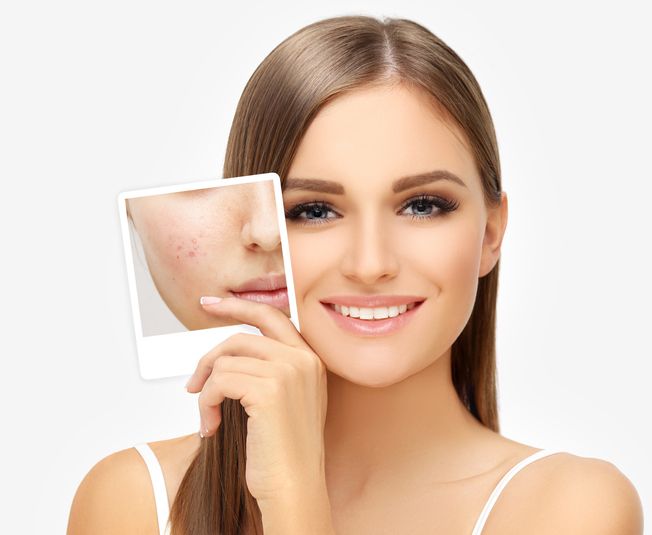
With time some acne scars vanish although it may appear as though acne scars are unavoidable, there are steps you can take to lessen your chance of developing scars after the acne has cleared up. Over-the-counter medications and particular acne scar treatments could be useful for people with acne scars. If your acne scar seems to persist it is advised to seek help from a dermatologist to treat acne scars. Also keep in mind to keep in touch with your dermatologist and any other medical professionals you consult and be sure to ask about acne scars treatment and options and raise any queries and express any concerns. Together you and your doctors can decide what is best for you.



